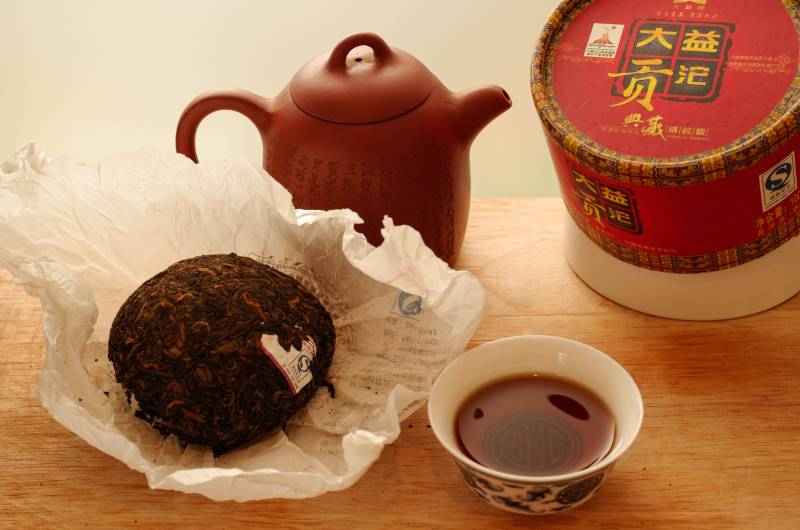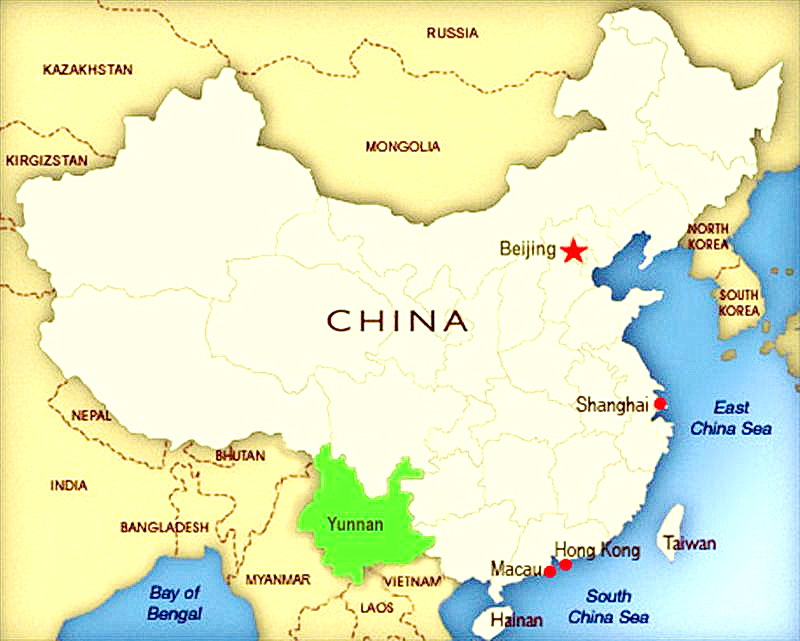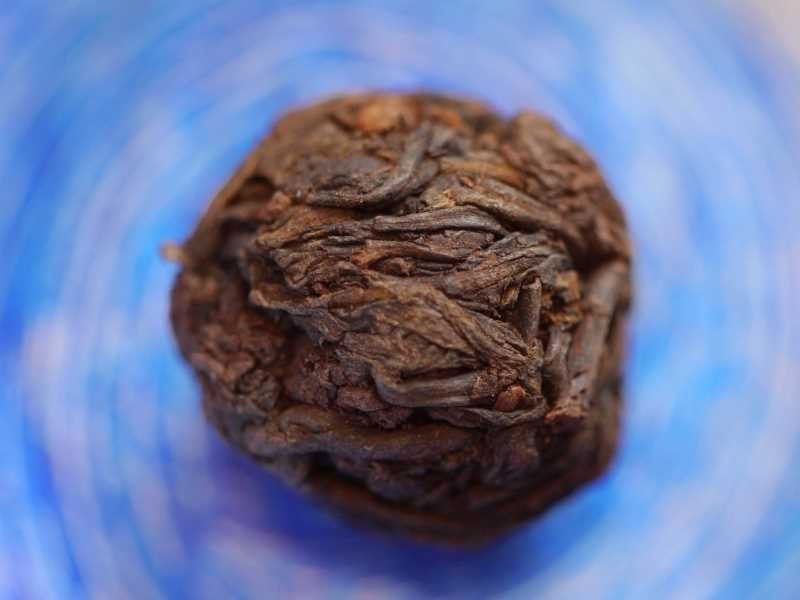
Da Yi Gong Tuo Pu-erh shou cha 2010 by Copypaiste (via Wikimedia Commons)
Howdy folks! Recently we discussed the difference between oxidation and fermentation in tea production. We talked about how black and oolong teas do not ferment, but rather go through oxidation. Yet, there are some teas that do undergo fermentation. One notable example of this is China’s Pu-erh tea.
What Is Pu-erh Tea?

Yunnan, China
Pu-erh is an aged tea that has its origins in the Yunnan province of China. This tea has been a popular drink and export from the province for hundreds of years. It’s cultivated from the wild tea trees (the Camellia Sinensis plant that all tea comes from) that grow on the mountains. Local teawrights craft the leaves, and then allow it to age for many years. It’s during this aging process that the leaves will undergo fermentation. As we discussed before, this is different than the oxidation that occurs in black and oolong teas.
Tea drinkers in China refer to pu-erh as a black tea. This is confusing to us in the West, because it’s not the same as our black tea. In China, a black tea is a tea that has undergone actual fermentation.
How Pu-erh Tea Is Made
Teawrights start by harvesting leaves from the wild tea trees growing in the mountains of China’s Yunnan province. Many of these trees are hundreds of years old and can grow 20 to 30 feet high.
After teawrights select the leaves, they craft the tea by using either one of two processes. The first method produces sheng, or “raw” pu-erh. The second method produces shou, which is “ripe” or “cooked” pu-erh. Today we are going to focus on how to make sheng pu-erh.
Throughout most of its history, sheng has been the primary method of crafting pu-erh tea. The leaves are first crafted using a similar method used to craft green tea. Then, teawrights place the leaves into a press and will compress the leaves into a variety of shapes. Some of the more common ones include a cake, a disc, a bowl, a pearl, or even a mushroom.

Pu Erh Pearl by Rebecca Siegel (via Flickr)
After the leaves are compressed, they are stored. This can last from a couple of years to decades. It’s during this storage period that the leaves age and the tea is able to ferment. The leaves are kept in a dark, warm and somewhat humid environment. This allows the microbes living on the tea leaves to begin fermentation. Many believe the fungus Aspergillus Niger to be the primary microbe responsible for the fermentation of pu-erh. Because there is little-to-no water involved, this process is called solid state fermentation (think of fermentation in cheese rather than beer). These microbes metabolize the carbohydrates and amino acids in the tea leaves. Additionally, some oxidation will occur in the aging process. Both the fermentation and oxidation give pu-erh its distinctive flavor.
The leaves will remain in storage to age for years, before they are prepared for consumption. Because of the long storage time, teawrights must keep the leaves in conditions that are just right. Any deviations in temperature, humidity or light could kill the microbes fermenting on the leaves. These deviations could also promote unwanted bacteria growth on the surface of the leaves.
There is no set limit for how long pu-erh should age. When the teawright decides that the leaves are ready, they will be packaged and sold. Sheng pu-erh is sold as a loose leaf tea called “mao cha”, or it will remain in the compressed shape that it was aged in.
Next week we’ll discuss how teawrights make shou pu-erh. We’ll also cover how to buy, brew, and store your own pu-erh tea. Stay tuned!
Discuss this post on our subreddit
[related-posts]
